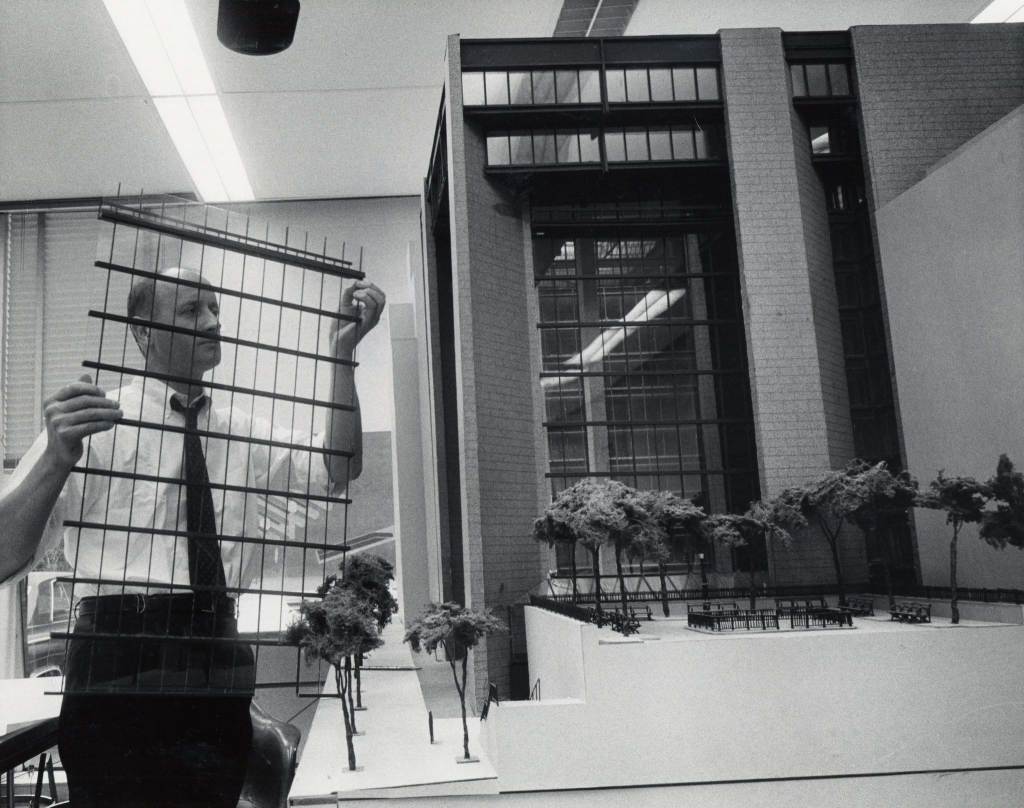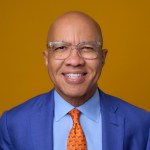
All of us at the Ford Foundation are saddened by the death of Kevin Roche, the Pritzker Prize-winning architect behind some of the world’s most remarkable buildings—including the Ford Foundation’s own, in New York City. Our relationship to this stunning building, and to Kevin himself, made him an essential part of the Ford Foundation family. I was fortunate to get to know Kevin well over my years as president: He was a kind, gentle man with a keen eye and a towering vision, and we will miss him.
When Kevin designed the Ford Foundation building in the 1960s, it was truly radical: a transparent structure of glass, granite, and Corten steel, stretching the width of the block between 42nd and 43rd streets. With this innovative urban space—which raised not a few eyebrows at the time—Kevin endeavored to create a building that captured the aspirations of the foundation’s social justice mission. And he succeeded. In New York Times architecture critic Ada Louise Huxtable’s review of the building, published upon its opening in 1967, she wrote that the Ford Foundation headquarters is “that rarity, a building aware of its world, as well as a work of art.”
Accessibility Statement
- All videos produced by the Ford Foundation since 2020 include captions and downloadable transcripts. For videos where visuals require additional understanding, we offer audio-described versions.
- We are continuing to make videos produced prior to 2020 accessible.
- Videos from third-party sources (those not produced by the Ford Foundation) may not have captions, accessible transcripts, or audio descriptions.
- To improve accessibility beyond our site, we’ve created a free video accessibility WordPress plug-in.
In this 2012 video, Kevin Roche visits the Ford Foundation building and reflects on the ideas that fueled the project.
I love that line and return to it often, because it captures how we feel about our building today, at a time when it remains radical—both in its striking design, and in the fact that the foundation still owns and occupies it. Over the years, the building has only become more closely aligned with our identity and our work, and we feel a deep sense of gratitude and responsibility toward it as stewards. Indeed, the strength of Kevin’s vision helps explain why we have reinvested in the building, recently concluding a project that preserved its timeless design while making it even more open, inclusive, and environmentally friendly.
Three years ago, before the building closed for two years of construction, I had the honor of touring it alongside Kevin and sharing our plans for its transformation as the Ford Foundation Center for Social Justice. Admittedly, I was a little nervous: This building was his signature, and though we had undertaken the project with the utmost respect for maintaining his work, I knew the changes might not be easy for him. So I was gratified when, casting his eye over the atrium, he said, “This is very exciting; congratulations.”
One of the many lessons I learned from Kevin is that a building is never just a building, because buildings are inhabited and experienced by people. His designs challenged people to open their eyes and their minds to the spaces they were in, as well as to the world around them. We are indebted to Kevin for his vision and his friendship, and comforted to know that he lives on through the beauty he created for so many of us to enjoy.
